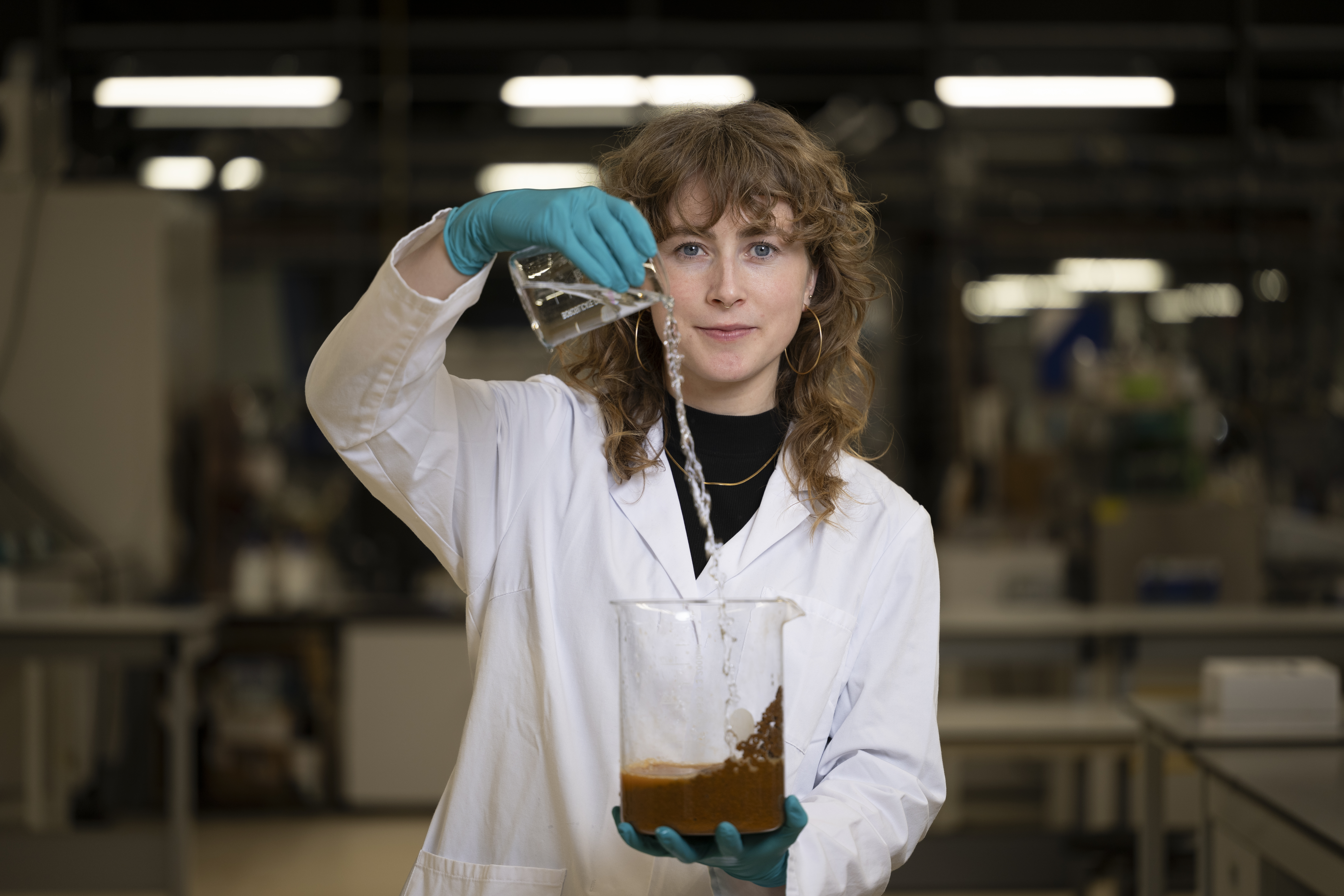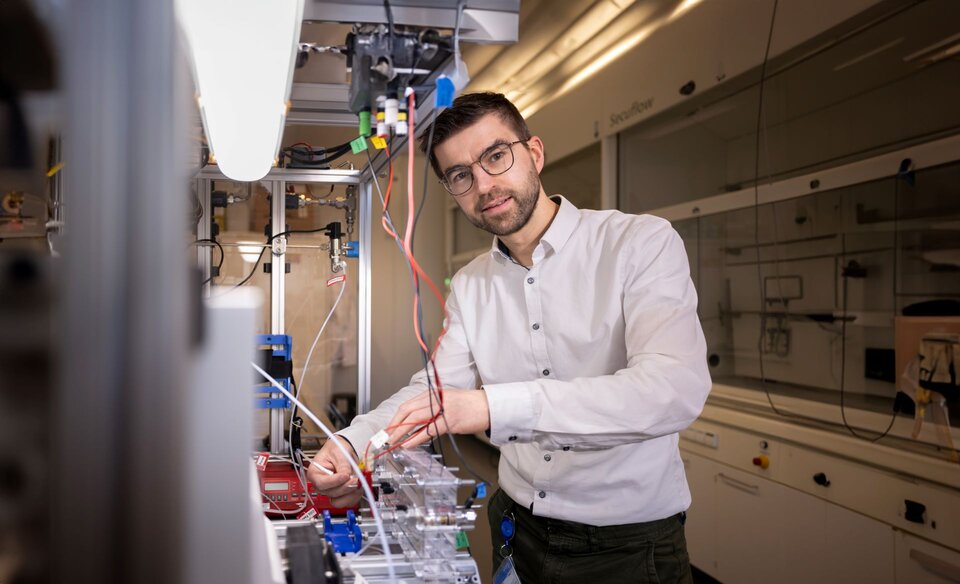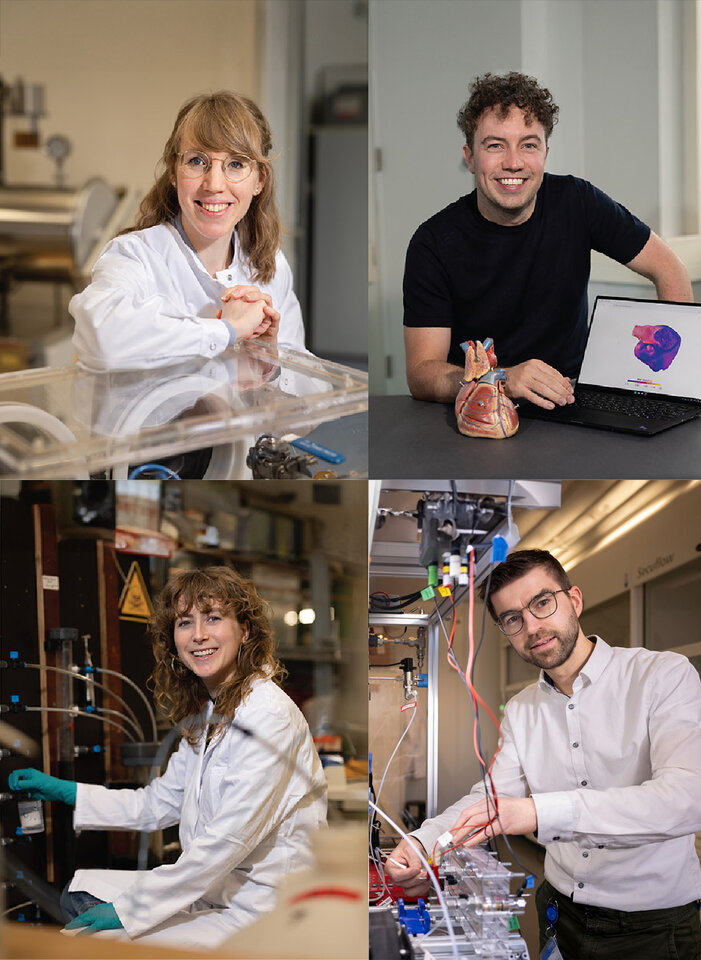Drinking water from groundwater wells in Bangladesh often has a too high concentration of arsenic. According to estimates, one out of 10 adults die from the effects of arsenic poisoning. Engineer Roos Goedhart is researching how bacteria can help remove arsenic in drinking water treatment and how this process can be improved. Her objective? To design a simple, natural method that effectively purifies groundwater, removing the arsenic, and as such giving millions of people access to safe drinking water.
Arsenic is considered a heavy metal. It is contained naturally in soil and can end up in groundwater. The long-term ingestion of arsenic raises the chance of contracting cancer. The standard of the World Health Organization (WHO) is that the concentration of arsenic in drinking water may not exceed 10 micrograms per litre.
“The concentration of arsenic in groundwater varies strongly across locations,” says Goedhart. “There are a few places in the Netherlands where the concentration in groundwater is higher. After purification, the international WHO standard is achieved. Bangladesh and other countries such as Vietnam, India and the United States have locations with more than 100 or even more than 1,500 micrograms per litre.”
In terms of the quality of its drinking water, the Netherlands sets very high goals and continuously invests in treatment. “A better way of removing arsenic from groundwater would both further improve the quality of the drinking water here and make the treatment process more sustainable. Even bigger gains could be made in other countries. In Bangladesh for example, there are still life-threatening quantities of arsenic in drinking water. There are treatment plants, but not all of them work that well.”
Groundwater treatment
The basic principle of groundwater treatment in the Netherlands and Bangladesh is the same. The first step is to pump up groundwater and then oxidise it to start chemical reactions. The water is then filtered, often through a container of sand. The water is purified by both chemical and biological reactions in the filter layer.
“We still do not know exactly what happens with the arsenic during the treatment process. The process often removes the arsenic, but the extent to which this is done varies enormously across plants. I am trying to find out why this is the case. We want to know which reactions are responsible for arsenic removal and how we can optimise these processes so that it works even better.”

"If we can find a simple solution to remove arsenic from groundwater, there will be a lot more safe drinking water available."
Ir. Roos Goedhart, PhD candidate TU Delft
Natural alternative
At present, if the treatment process does not remove enough arsenic from the water, chemicals are added to optimise this process. “Bangladesh often has small-scale treatment systems. These can lack the manpower, infrastructure and sometimes the chemicals to run this extra purification step. My goal is to find an alternative for the chemicals and find a natural solution instead of a chemical one. This could then be used in both the Netherlands and in Bangladesh.”
Safe drinking water
“Water scarcity and contaminated drinking water is an ever increasing issue. Groundwater is a wonderful source of water as it is more protected from external impacts such as pharmaceutical residues and PFAS. But groundwater can be contaminated with toxic arsenic, which has to be removed. If we can find a simple solution for this, there will be a lot more safe drinking water available.”
With contributions from alumni
“We will measure different types of filters in water treatment plants in Bangladesh to monitor arsenic removal. Additional budget will help us extend the fieldwork, also to other countries where the arsenic concentration in groundwater is also high. This will help us gain understanding in the processes in different parts of the world, making our research even more relevant.
In our research we want to see which bacteria live in the filters and which remove the arsenic. The filter samples that we collect need to be analysed using special microbiological techniques. Some of the techniques are not available at our Faculty. With more funding I can learn these techniques myself and bring the knowledge to our group. Better analysis will create greater knowledge and better research results.”
-
Delft University Fund uses your data to process and record your donation and to inform you about the activities and work of the University Fund. Your personal details will be treated confidentially in accordance with the Dutch Personal Data Protection Act and will never be provided to third parties. Please read our privacy statement here.
Researcher profile
Name: Roos Goedhart (27)
Born in: Amersfoort
Expertise: Water treatment
Faculty: Civil Engineering and Geosciences
Working on: better understanding how bacteria remove arsenic during groundwater treatment
Potential applications: simple way to make safe, arsenic-free drinking water worldwide?
Donation spent on: extending the fieldwork and deploying more microbiological expertise
Why TU Delft
“TU Delft is a recognised entity in water treatment internationally. You see this if you go to other places in the world and we can be very proud of this. I learned everything I know about water treatment at TU Delft, and the laboratory is well equipped to carry out my tests. I will build a small version of a drinking water treatment plant right here in our WaterLab. This enables me to closely track and measure the chemical and biological processes. It is a unique set-up in the Netherlands.
This research fits the modern TU Delft well. First understand the problem and assess the whole picture, and then start working on a technical solution. In my case I am working on improving water treatment using natural processes with as few interventions as possible.”






